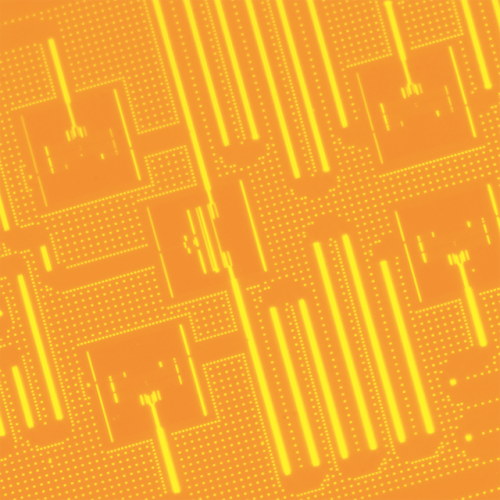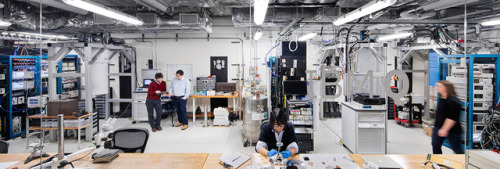Flame Color Guide Of Various Materials Combustion

Flame color guide of various materials combustion
More Posts from Science-is-magical and Others

Both hemispheres of the brain process numbers
Researchers of the Jena University (Germany) and of the Jena University Hospital located an important region for the visual processing of numbers in the human brain and showed that it is active in both hemispheres. In the ’Journal of Neuroscience’ the scientists published high resolution magnetic resonance recordings of this region.
The human brain works with division of labour. Although our thinking organ excels in displaying amazing flexibility and plasticity, typically different areas of the brain take over different tasks. While words and language are mainly being processed in the left hemisphere, the right hemisphere is responsible for numerical reasoning. According to previous findings, this division of labour originates from the fact that the first steps in the processing of letters and numbers are also located individually in the different hemispheres. But this is not the case, at least not when it comes to the visual processing of numbers.
Neuroscientists of the Friedrich Schiller University Jena and of the Jena University Hospital discovered that the visual processing of numbers takes place in a so-called ‘visual number form area’ (NFA) - in fact in both hemispheres alike. The Jena scientists were the first to publish high resolution magnetic resonance recordings showing the activity in this region of the brain of healthy test persons. The area is normally difficult to get access to.
The 'blind spot’ in the brain
In their study Dr. Mareike Grotheer and Prof. Dr. Gyula Kovács from the Institute for Psychology of Jena University as well as Dr. Karl-Heinz Herrmann from the Department of Radiology (IDIR) of the Jena University Hospital presented subjects with numbers, letters and pictures of everyday objects. Meanwhile the participants’ brain activity was recorded using magnetic resonance imaging (MRI). Thus the researchers were able to clearly identify the region in which the visual processing of numbers takes place. The small area at the underside of the left and right temporal lobe reacted with increased activity at the presentation of numbers. Letters and other images but also false numbers lead to a significantly lower brain activity in this area.
Although the Jena team already knew from other scientists’ previous research where they had to look for the area, a lot of developmental work went into the newly published story. “This region has been a kind of blind spot in the human brain until now,” Mareike Grotheer says. And here is why: Hidden underneath the ear and the acoustic meatus, surrounded by bone and air, previous MRI scans showed a number of artefacts and thus obstructed detailed research.
For their study the Jena scientists used a high-performance 3 tesla MRI scanner of the Institute of Diagnostic and Interventional Radiology (IDIR) of the Jena University Hospital. They recorded three-dimensional images of the brain of the test subjects at an unusually high spatial resolution and hence with only very few artefacts. In addition these recordings were spatially smoothed whereby the remaining 'white noise’ could be removed. This approach will help other scientists to investigate a part of the brain that until now had been nearly inaccessible. “In this region not only numbers are being processed but also faces and objects,” Prof. Kovács states.

Cullen and Romulus are the world’s first set of identical twin puppies. While it’s possible that canines could have produced twins in the past, these Irish wolfhounds are the first to be medically documented and confirmed with DNA testing. Source Source 2

ELI5:How come people can't be cryogenically frozen safely as the ice crystals destroy the cell membranes, but sex cells such as sperm are kept frozen for long periods of time yet remain functional?
I work in a lab where we freeze down cells all of the time. We freeze our cells in a medium that contains 5% DMSO, which among other things can be used as a cryoprotectant. However, DMSO is also toxic to cells at the concentrations necessary for cryoprotection. Consequently, when you freeze cells in DMSO, you add the DMSO medium at ice-cold temperatures and don’t allow the cells to warm up. When you later thaw the cells, you have to dilute out the DMSO as quickly as possible without causing osmotic shock, which can pop the cells. Such restrictions on freezing and thawing would basically be impossible to control at the level of a complete organism.
However, to contradict a lot of previous posts, individual cells can be recovered from freezing with high viability. When performed properly (and this varies quite a bit by cell type), you can expect >90% of cells to be alive following thaw.
The chemicals that allow cells to survive freezing are toxic to the body. Keeping the cells cold minimized the damage that this chemical does to the cells. With single cell solutions, adding the chemical at ice-cold temperatures and immediately diluting it out when you thaw the cells can keep 90% of the cells alive. There’s no way to do this with an intact body.
It’s also worth noting that this is probably not the only reason that this technique doesn’t scale to organisms.
Explain Like I`m Five: good questions, best answers.

Scalp is the soft tissue layer covering the bony vault over the brain. It is usually described as having five layers: S: The skin on the head from which head hair grows. It contains numerous sabaeceous glands and hair follicles C: Connective tissue. A thin layer of fat and fibrous tissue lies beneath the skin. A: The aponeurosis called epicranial aponeurosis (or galea aponeurotica) is the next layer. It is a tough layer of dense fibrous tissue which runs from the frontalis muscle anteriorly to the occipitalis posteriorly. L: The loose areolar connective tissue layer provides an easy plane of separation between the upper three layers and the pericranium. P: The pericranium is the periosteum of the skull bones and provides nutrition to the bone and the capacity for repair.
(x)

the drum is filled with hot steam and then sprayed with cold water. the pressure on the outside of the drum is far more than inside. the pressures try to maintain and find balance taking the drum as a casualty.




Quantum computers have arrived.
First there was the mainframe, then came the personal computer, now we’ve reached a new monumental landmark in the history of technology. For the first time ever, IBM aims to bring universal quantum computers out of the lab and into the commercial realm. Projected to sift through vast possibilities and data, to choose the perfect option or discover unseen patterns, quantum computing is poised to drive a new era of innovation across industries. This means that some of the world’s most complex problems now have a chance of being solved. And as the quantum eco-system grows, a seemingly impossible kind of physics could start to make the most incredible things possible.
Learn More →

A Powerful Solar Flare : It was one of the most powerful solar flares in recorded history. Occurring in 2003 and seen across the electromagnetic spectrum, the Sun briefly became over 100 times brighter in X-rays than normal. The day after this tremendous X 17 solar flare – and subsequent Coronal Mass Ejection (CME) – energetic particles emitted from the explosions struck the Earth, creating auroras and affecting satellites. The spacecraft that took these frames – SOHO – was put in a turtle-like safe mode to avoid further damage from this and subsequent solar particle storms. The featured time-lapse movie condenses into 10 seconds events that occurred over 4 hours. The CME, visible around the central sun-shade, appears about three-quarters of the way through the video, while frames toward the very end are progressively noisier as protons from the explosions strike SOHO’s LASCO detector. One this day in 1859, the effects of an even more powerful solar storm caused telegraphs on Earth to spark in what is known as the Carrington Event. Powerful solar storms such as these may create beautiful aurora-filled skies, but they also pose a real danger as they can damage satellites and even power grids across the Earth. via NASA
-
 holespirt liked this · 3 weeks ago
holespirt liked this · 3 weeks ago -
 smileyhazel-blog liked this · 1 month ago
smileyhazel-blog liked this · 1 month ago -
 enigmaticnue liked this · 1 month ago
enigmaticnue liked this · 1 month ago -
 skyiiskyii liked this · 1 month ago
skyiiskyii liked this · 1 month ago -
 derroteros liked this · 1 month ago
derroteros liked this · 1 month ago -
 saltytyrantgalaxy liked this · 1 month ago
saltytyrantgalaxy liked this · 1 month ago -
 belamondo liked this · 2 months ago
belamondo liked this · 2 months ago -
 monte737 liked this · 2 months ago
monte737 liked this · 2 months ago -
 skdienajskcjrj liked this · 2 months ago
skdienajskcjrj liked this · 2 months ago -
 viniciochon liked this · 2 months ago
viniciochon liked this · 2 months ago -
 young7475 liked this · 2 months ago
young7475 liked this · 2 months ago -
 betz-threadform liked this · 2 months ago
betz-threadform liked this · 2 months ago -
 aboundlessimagination liked this · 3 months ago
aboundlessimagination liked this · 3 months ago -
 snavse-blog liked this · 3 months ago
snavse-blog liked this · 3 months ago -
 somethinginspiringhere reblogged this · 3 months ago
somethinginspiringhere reblogged this · 3 months ago -
 covenscribe reblogged this · 3 months ago
covenscribe reblogged this · 3 months ago -
 covenscribe liked this · 3 months ago
covenscribe liked this · 3 months ago -
 starbuds-and-rosedust reblogged this · 3 months ago
starbuds-and-rosedust reblogged this · 3 months ago -
 starbuds-and-rosedust liked this · 3 months ago
starbuds-and-rosedust liked this · 3 months ago -
 breath-of-eternity reblogged this · 3 months ago
breath-of-eternity reblogged this · 3 months ago -
 thatdarnyeti liked this · 3 months ago
thatdarnyeti liked this · 3 months ago -
 lorin-irena reblogged this · 3 months ago
lorin-irena reblogged this · 3 months ago -
 musictherapy611 liked this · 3 months ago
musictherapy611 liked this · 3 months ago -
 coolcalmcollector-blog reblogged this · 3 months ago
coolcalmcollector-blog reblogged this · 3 months ago -
 nebgrid liked this · 3 months ago
nebgrid liked this · 3 months ago -
 xining20 liked this · 3 months ago
xining20 liked this · 3 months ago -
 slime-wizard reblogged this · 3 months ago
slime-wizard reblogged this · 3 months ago -
 slime-wizard liked this · 3 months ago
slime-wizard liked this · 3 months ago -
 coolcalmcollector-blog liked this · 3 months ago
coolcalmcollector-blog liked this · 3 months ago -
 lookingformyperfectsandwich liked this · 3 months ago
lookingformyperfectsandwich liked this · 3 months ago -
 metaplasma liked this · 3 months ago
metaplasma liked this · 3 months ago -
 hungmaau reblogged this · 3 months ago
hungmaau reblogged this · 3 months ago -
 kawiza reblogged this · 3 months ago
kawiza reblogged this · 3 months ago -
 platonicasever liked this · 4 months ago
platonicasever liked this · 4 months ago -
 oo9099 liked this · 4 months ago
oo9099 liked this · 4 months ago -
 joanjo2 liked this · 4 months ago
joanjo2 liked this · 4 months ago -
 sugimoto-dorm reblogged this · 4 months ago
sugimoto-dorm reblogged this · 4 months ago -
 pinklocksoflove reblogged this · 4 months ago
pinklocksoflove reblogged this · 4 months ago -
 negative-speedforce reblogged this · 4 months ago
negative-speedforce reblogged this · 4 months ago -
 ele-millennial-weirdo reblogged this · 4 months ago
ele-millennial-weirdo reblogged this · 4 months ago -
 freshstrangerfun liked this · 4 months ago
freshstrangerfun liked this · 4 months ago -
 jixiji liked this · 4 months ago
jixiji liked this · 4 months ago -
 razel-us liked this · 5 months ago
razel-us liked this · 5 months ago -
 newyork2562865 liked this · 5 months ago
newyork2562865 liked this · 5 months ago



